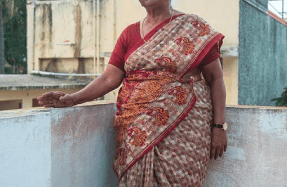STEPSONS OF THE SOIL


ON 14 FEBRUARY LAST YEAR, in one the deadliest militant attacks in Kashmir, a suicide bomber drove a car filled with explosives into a convoy of the Central Reserve Police Force, on the Jammu–Srinagar highway in Pulwama, killing 49 security personnel. The incident invigorated the reelection campaign of Prime Minister Narendra Modi and his Bharatiya Janata Party, which began using national security as its primary plank for the upcoming general election. The party’s supporters increased the pitch of their nationalist and anti-Pakistan rhetoric.
That same month, The Caravan published an article titled, “Urban upper-castes driving Hindutva nationalism have little representation among Pulwama’s slain jawans,” in which the journalist Ajaz Ashraf analysed the social background of the martyred jawans. Ashraf showed that while those propagating hyper-nationalism on social media are often upper-caste and upper-class, the soldiers who had lost their lives in the attack predominantly came from marginalised communities, such as Scheduled Castes, Scheduled Tribes and Other Backward Classes. He argued that it was the marginalised who often had to pay the price for the fervent patriotism of the ruling elite.
Right-wing media houses, such as Republic TV and Times Now, among others, criticised the article, terming it “anti-national,” “casteist” and “dishonouring of the martyrs.” In an hour-long show on Times Now, the anchor Rahul Shivshankar complained that jawans’ “sacrifices are being stripped of its dignity. Sacrifices [are] being examined using the lens of caste, religion and creed.” He added that “there are some institutions where we rise above our identities because we are in the service of one India … Soldiers serve and sacrifice as Indians, not as Dalits, Brahmins, OBCs, Muslims.” Arnab Goswami, in another hour-long show on Republic, called the article “anti-national” and put forward the absurd claim that the Pakistan army was using The Caravan to attack India. It was barely surprising to see two upper-caste anchors, who run largely upper-caste Hindu newsrooms, outrage over the article endlessly without even addressing the point it was trying to make.
But the outrage spilled over. Moses Dhinakaran, then the deputy inspector general of the CRPF, tweeted in response to the article, “We in CRPF identify ourself as Indians. Not more, not less. This pathetic divisiveness of caste, color, and religion doesn’t exist in our blood. You should strictly refrain from insulting all the martyrs. They are not statistics for your demeaning and meaningless write-up.” It was a strange thing to say, given that the armed forces have a long history of caste- and ethnicity-based regiments that glorify certain castes. The Caravan’s office started getting calls from self-avowed nationalists day and night who demanded to know how the magazine had dared to publish a story like this.

The outrage against the story stemmed from
You’re reading a preview, subscribe to read more.
Start your free 30 days



